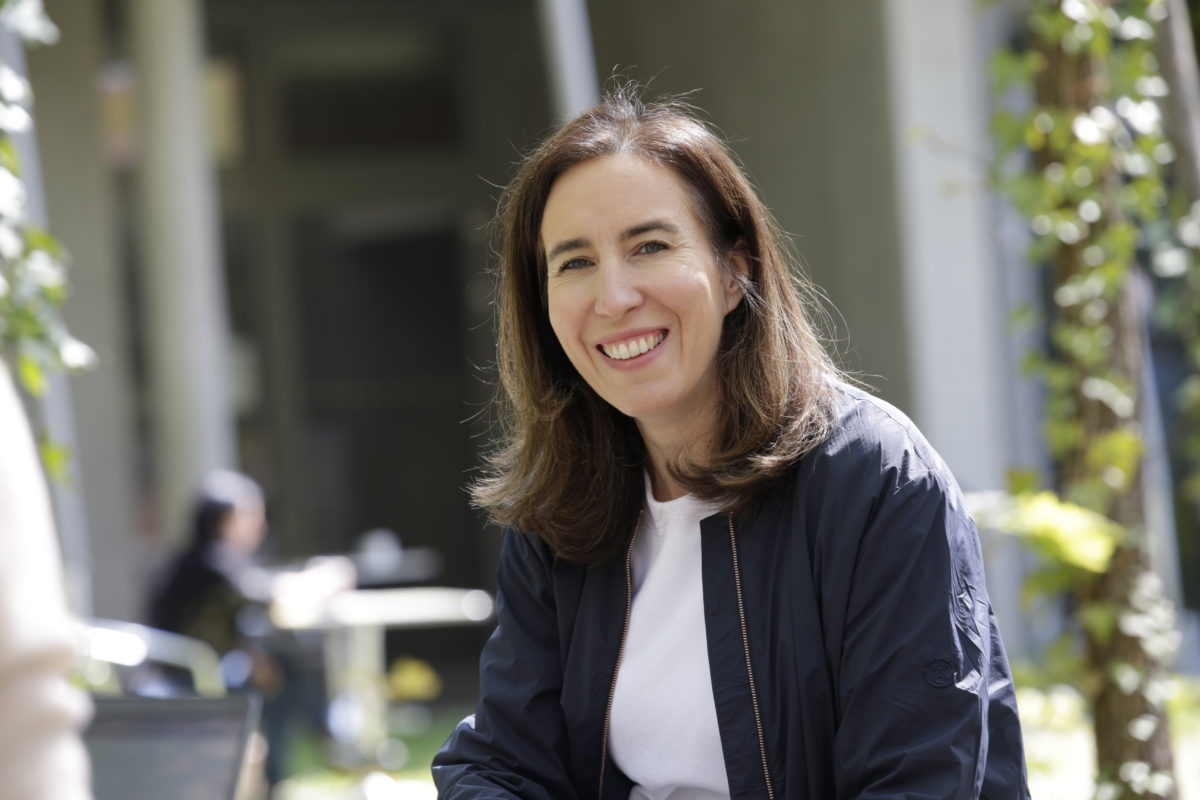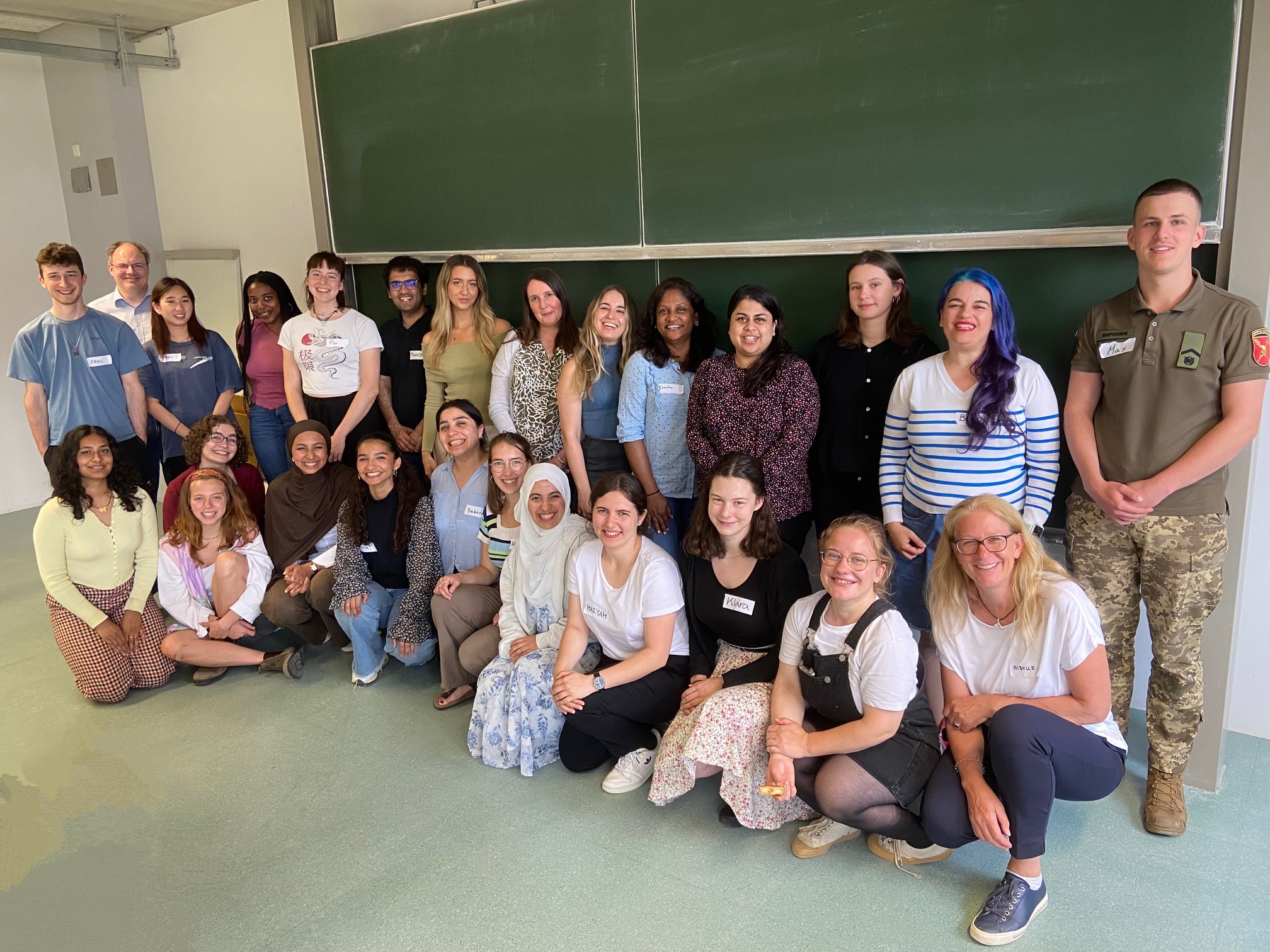The gender pay gap, i.e. the income difference between women and men, is still at 18% in Germany. Although there are now gender quotas on supervisory and management boards, women continue to be outnumbered in top positions. Katharina Wrohlich is Professor of Public Finance, Gender and Family Economics at the University of Potsdam and Head of the Gender Economics Research Group at the German Institute for Economic Research (DIW). The economist researches gender equality in the German labor market.
You recently showed in a study that starting a family continues to be a critical turning point for women’s employment biographies. Why is that – and does this not apply to men?
In fact, no. Especially if we look at how average gross hourly earnings in Germany develop during the time of gainful employment. Between the age of 20 and 30, hourly wages rise for both women and men. Although there is already a gender pay gap during this period, it is well below 10%. But for women, this wage growth comes to an abrupt end after 30. For men it increases at a constant rate until it reaches its maximum at the age of 47, but women retain the average wage they had at 30 until the end of their working lives. In their late 40s, women’s pay gap is over 30%. When I present this in my lectures, the consternation is great, especially among female students.
These are really shocking figures. How do they come about?
Especially in West Germany, and to a lesser extent in East Germany too, the extremely unequal division of gainful employment and care work begins when starting a family. Women and men now mostly work fulltime until the age of 30, but with the first child many women switch to part-time work. On the one hand, this makes it possible to a certain extent to reconcile work and family life and to integrate into the labor market. On the other hand, the hourly wage is lower, so that long phases of part-time work result in wage reductions. Hence the development of wages and of working hours are interrelated. In West Germany, the majority of women work part-time after starting a family, not just for a few years, but until the end of their working lives. This in turn is due to the unequal division of gainful employment and care work, the “gender care gap.”
The differences between East and West are very striking: the gender pay gap in 2020 was 6% in the eastern federal states and 20% in the West.
Yes, there are big differences between the East and West. Social norms are the reason. In recent years, the social model in western Germany has merely evolved from the 1- to the 1.5-earners model. But an increasingly large proportion of families in eastern Germany are also living this way.
Do couples decide to have the mother take a career break for financial reasons?
Both financial disadvantages and perceptions of motherhood play a role here. For couples under 30, the difference in hourly wages is not yet so big that it would be logical to choose this division. A study on the occasion of German reunification showed that there is a relatively high acceptance of mothers working in general, but not of mothers of young children working full-time.
In addition to such social norms, there are also financial reasons: A mother usually stays at home for one or two years after the birth of her first child. Then comes the second child and she is not employed for three or four years. Then she continues part-time for five or six years. During this time, the man’s salary has increased, while the woman’s salary has remained constant. So, it seems logical that the woman with the lower salary continues to downshift. Last but not least, the state’s tax and social security system makes it overall very attractive financially for the woman to continue working part-time, especially in mini-jobs. The state subsidizes this model.
How exactly do policies encourage an unequal division of labor within couples?
The tax splitting of married couples, for example, treats spouses equally if they have a joint taxable income. Therefore, it makes no difference whether 40,000 euros are earned by one person or by two people working full-time. The underlying principle is that the man is responsible for supporting the whole family. In addition, mini-jobs have been heavily promoted since the Hartz reforms: An average family initially loses net income if the woman’s gainful employment extends beyond the mini-job. Why should the large group of people of prime working age have their social security contributions subsidized? The situation is similar when it comes to health insurance, where, for example, spouses in marginal employment are co-insured free of charge.
One might ask innocently: What is the problem with the single-earner model in marriage? It offers women security, doesn’t it?
One of my colleagues at the DIW used to say, “Being a wife is a risky job!” Every third marriage in Germany is divorced. For years, the wife did not work at all, or worked part-time or in a mini-job; the aforementioned wage growth did not happen, and now her standard of living is decreasing massively. Her eligibility for social security, such as unemployment benefits or pensions, is much lower. But this is not just about the risk of divorce: The sole earner may also become ill or unemployed, for example.
When it comes to the earnings gap, Germany compares poorly to other countries with similar female employment rates. Why is that?
Germany ranks almost last in an EU comparison. Romania and Italy rank near the top, which is perhaps surprising at first. However, when making such comparisons, one should not only look at the earnings gap but also consider the female employment rate, which is very heterogeneous across the EU: In countries where only about half of women are gainfully employed, such as Italy or Romania, it is the women with higher earnings who work. But even among countries with the same labor force participation rate, Germany, together with Austria, by the way, has the largest gap. This is due to the high proportion of part-time work. Iceland and the Scandinavian countries not only have a higher female employment rate than Germany but also smaller gaps.
What do these countries do better?
The Nordic countries have had more consistent gender equality policies for decades. One example is good quality childcare for all age groups. Quality is very important because without it parents will not take up the offer. Good childcare is also important in terms of social policy because it can lead to more equal opportunities in education. But the tax system plays a role, too: In Sweden, for example, there is consistently individualized taxation. Another example is parental allowance, which has existed in Sweden and Norway since the early 1990s and which Germany has adopted
from there.
Speaking of parental allowance: In order for a couple to receive 14 months of parental allowance, one partner must apply for at least two months of parental allowance. In practice, many fathers limit themselves to these two months. Why aren‘t these partner months extended?
The regulations on parental allowance are now 15 years old. The fact that there was a time without this benefit has almost been forgotten. If policy makers were now to stipulate that a couple would only receive 14 months of parental allowance if these were shared equally, this would be met with resistance. Many would perceive this as a cutback. It would actually make sense to extend the partner months – tellingly called “fathers’ months” in common parlance – so that care work could be shared more equally.
However, the coalition agreement does not envisage any far-reaching reforms to parental benefits or even to spousal tax splitting. There is even a plan to raise the mini-job limit. In other areas, such as reproductive rights or foreign policy, the current government has set out many concrete plans with regard to equal rights policy. But when it comes to combating economic inequality between women and men, the coalition agreement is somewhat disappointing. Starting a family remains a critical life phase for the time being.
Preschool teacher, geriatric nurse, housekeeper – lower-paid occupations are more often pursued by women. Why is that?
High gender segregation is indeed another reason for the gender pay gap in Germany. “Traditionally female jobs,” that is, jobs in which more than 70% of employees are female, are paid worse on average. But this is not my area of research, although the topic is very interesting.
Regarding care work, you also looked at gender relations during the pandemic. What are your conclusions?
Before Corona, there was a very uneven distribution of unpaid care work. When daycare centers and schools closed from one day to the next, this massively increased the amount of care work in many families. Many feared a backlash, meaning that women would completely take over childcare and household responsibilities. Others saw an opportunity for fathers, who worked from home, to participate more. We analyzed data from the first lockdown in spring 2020 and the second hard lockdown in January and February 2021. They confirm neither hypothesis. Parents who had shared care work equally before continued to do this; if mothers were more likely to be responsible before, this remained the same way during the pandemic. Despite the enormous stress and shock, not much has changed. This shows how deeply rooted role models and the resulting division of tasks are.
The proportion of women on top management boards of companies has been rising since the relevant statutory regulations were introduced. Do you think they are effective?
Since 2015, there has been a gender quota for supervisory boards in companies that are listed on the stock exchange and have equal codetermination. This means that half of the supervisory board members are female employees. This group includes about 100 companies, which must now fill 30% of the positions with women. At the DIW, we have been publishing figures on the proportion of women on the executive and supervisory boards of the 500 largest companies in Germany for over 15 years in the “DIW Women Managers Barometer” and we see that the quota for supervisory boards has made a difference. The Dax 40 companies even exceed the mandatory quota of 30%. It’s a different story for board members, however. For a long time, it was said that a quota here would interfere too much with entrepreneurial freedom. Finally, however, the grand coalition reached an agreement and passed a law that must be implemented from August 2022 on. A board of four or more members must include at least one woman. But here, the group of affected companies is even smaller. However, the effect of the announcement alone was enormous: We have never seen such a high increase in the proportion of women on the boards of affected companies as between 2021 and 2022.
What are the benefits of gender quota?
First of all, it is about the purpose itself, i.e. reducing inequality in high decision-making positions. But beyond that, it is hoped that the visibility of these women will change gender stereotypes in society as a whole. In my current favorite research project, I am analyzing data from employees in Germany together with colleagues from Freie Universität Berlin and the University of Bielefeld. These employees were surveyed every few years. We found that when the gender of their supervisors changed during this time, gender biases, i.e. perceptions of gender shaped by stereotypes, also changed significantly. So even deeply ingrained attitudes can change via daily workplace interactions. That’s a strong argument for quotas. No one sees them as a particularly elegant instrument, but such effects give reason to hope that at some point we will no longer need them.
How can such often unconscious attitudes be examined?
When people are asked whether women and men should earn the same for the same work, the answer is almost always “Yes, of course.” That’s why the aforementioned study used vignettes to capture the unconscious stereotypes or “unconscious biases.” A vignette is basically a description of a hypothetical person. Respondents were presented with ten combinations of characteristics, for example: Ms. XY is X years old and works in profession XY. She performs the following service and has been employed there for X years. She earns X euros per month. The respondents were asked to indicate whether the wage was fair for the person in question. The result: lower wages are considered fairer for women than for men, namely by 3%. This is despite the fact that 90% of respondents oppose wage gaps. This unconscious bias exists for both women and men and increases sharply with respondents’ age. But it also rises with the age of the vignette person: For 30-year-old vignettes, it was zero percent; for 50-year-olds, it rose to over 6%. This is particularly fascinating because it reflects the evolution of actual wages over the course of a life. But we also observed that these biases disappear when, let’s say, you get a new female boss instead of a male one. Next, I would like to investigate what role parenthood plays in determining what wage is perceived as fair.
You have been at DIW since 2002 and at the University of Potsdam since 2021. Does your work at one institution stimulate your work at the other?
I really enjoy teaching at the University of Potsdam. I sometimes invite colleagues from DIW to my courses, for example last semester for a discussion of German pension policy. The students like that. Even though teaching at the university is still relatively new for me, I have been involved in knowledge transfer at DIW for a long time: We publish our research results in the institute’s weekly report and answer inquiries from the media every week, sometimes also from parliamentary groups, ministries, or interest groups. In my view, science communication is very important, and especially during the pandemic we have seen that it is increasingly important.
.
This text was published in the university magazine Portal Wissen – Two 2022 „Humans“ (PDF).
.
Text: Dr. Jana Scholz
.
In the picture: Prof. Dr. Katharina Wrohlich, credits: Sandra Scholz.










